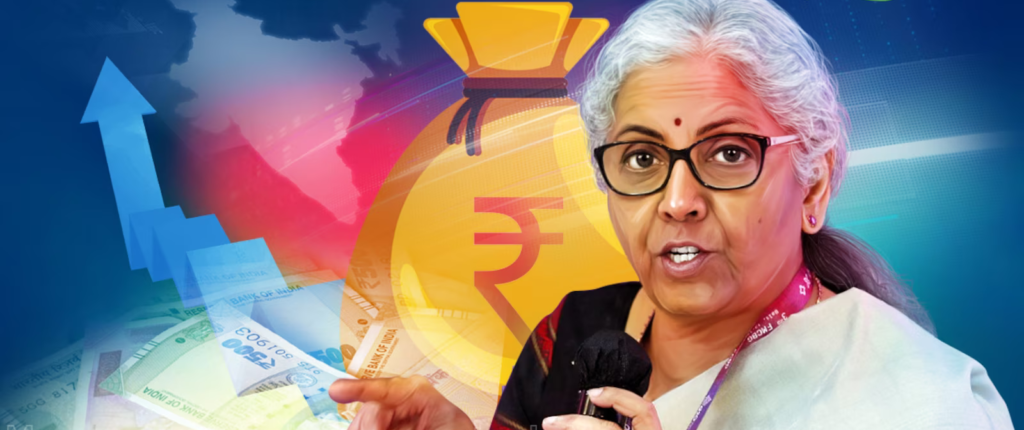
Introduction
We all know that knowledge is power. But unfortunately, many women around the world are denied this power due to unequal access to literacy. Regarding education, there is no doubt that sexism exists, and it stands in the way of women achieving their goals. There is no denying that women are often unfairly disadvantaged in literacy by many factors.
Financial literacy for women is essential to empower themselves and secure a path toward financial success.
With the struggles faced by women in terms of financial stability, it is crucial to shed light on the importance of gaining financial knowledge and staying informed.
In this article, we will discuss women’s struggles and the factors contributing to the wealth gap.
Read this article to understand the nuances of women’s financial literacy.
Importance of Financial Literacy for Women
Financial literacy for women is vital in equipping them with the knowledge and understanding to make informed financial decisions.
By being financially literate, women can navigate complex financial situations and take control of their economic well-being. It allows them to have a proactive approach to money management and to build a solid foundation for their financial future.
What is Financial Literacy for Women?
Simply put, financial literacy is knowing and understanding how money works. It’s like having a map that helps you navigate the world of finances.
Financial literacy allows you to manage your money and make smart money decisions.
Besides that, you can also understand basic concepts like budgeting, saving, investing, and debt.
It means handling your money effectively. For a woman to know about basic finance-related terms is a first step to financial independence.
Gender Wealth Gap
The gender wealth gap is the wealth or net worth disparity between men and women.
It reflects the unequal distribution of financial assets, property, and investments between genders.
Various factors contribute to the gender wealth gap, often resulting in women having less wealth or no financial security.
- Earnings Gap: One significant factor is the gender pay gap, where women typically earn less than men for the same or similar work. Lower incomes mean less money to save and invest, hindering wealth accumulation.
- Unpaid Labor: Women often shoulder huge domestic and caregiving responsibilities. It can limit their ability to work full-time or pursue higher-paying careers.
- Investment and Financial Literacy Gap: Women often need more confidence in managing their finances. It leads to them making fewer financial decisions.
- Societal Norms and Expectations: Societal norms and expectations can discourage women from taking risks with their finances or pursuing wealth-building opportunities.
This gender wealth gap can only be plugged in through active policies and initiatives promoting proper education access and gender equality.
How Can Women Gain Financial Literacy?
Despite the increased number of educated women, financial education still needs to be improved. According to a 2017 National Centre for Financial Education (NCFE) study, only 24% of Indian women are financially literate, compared to 35% of men. This gender gap is even more pronounced in rural areas, where only 15% of women are economically literate.
Various factors that have led to less financial education are as follows:
- Stereotypes: Traditional gender roles and societal expectations have led women to focus on household responsibilities. They are not encouraged to make their independent financial decisions.
- Cultural Barriers: Cultural norms discourage open discussions about money, making it difficult for them to seek information and education about financial matters.
- Economic Disparities: Women in India, with lower incomes than men, often face economic disparities. It limits their access to financial resources and their ability to invest in financial education.
- Lack of Inclusion: Financial education programs and resources are not always inclusive or accessible to women, which can further perpetuate the gender gap in financial knowledge.
There are ways women can gain financial education through the following methods
- Online Resources: Utilize online resources, including websites, apps, and YouTube channels, that offer financial education content. Many organizations provide free and easily accessible financial literacy materials.
- Financial Literature: Read books, articles, and publications on personal finance. There are many resources available in various Indian languages that cater to different levels of financial literacy.
- Set Financial Goals: Identify and set clear financial goals. Specific objectives can motivate women to learn more about managing their finances effectively.
- Practice Budgeting: Create a simple budget to track income and expenses. Budgeting is a fundamental aspect of financial literacy and money management.
- Invest Wisely: Learn about different investment options and the associated risks and returns. Start with low-risk, long-term investments if you are a beginner.
- Stay Informed: Keep up to date with financial news, economic developments, and changes in financial regulations that may affect your finances.
- Professional Courses: Consider enrolling in professional financial certification courses like the Certified Financial Planner (CFP) or Chartered Accountancy (CA) to develop an in-depth understanding of financial planning.
- Financial Inclusion Programs: Explore government-led financial inclusion programs and initiatives that may offer financial literacy components.
Empowering women with financial literacy in India is essential for their financial independence and well-being. By taking proactive steps to learn about financial concepts and practices, women can make informed decisions, manage their money effectively, and work towards achieving their financial goals.
Conclusion
In a world where knowledge is power, it is disheartening that many women are denied this power due to unequal access to education. The importance of financial literacy for women cannot be overstated, as it provides them with the tools to break free from the chains of financial dependency and secure their path toward success.
Financial literacy is like a beacon of light in the often complex and intimidating world of finances. It empowers women to navigate economic challenges confidently, make informed decisions about their money and lay a strong foundation for their financial future.
However, the gender wealth gap persists, which is fueled by factors such as the gender pay gap, unpaid domestic labor, and societal norms. These disparities continue to leave women at a disadvantage in their pursuit of financial security.
To bridge this gap, we must take collective action. Policies and initiatives that promote equal access to education, gender equality, and financial inclusion are crucial steps toward leveling the playing field.
But change also begins at the individual level. Women in India can seize the opportunity to gain financial literacy through readily available resources, online tools, and professional courses. Women can take control of their economic destinies by setting financial goals, practicing budgeting, making wise investments, and staying informed.
Response (6)
Leave a comment Cancel reply
Recent Posts
- 40 Super Hot Slot machine: Online 100 percent free Enjoy Position Video game For fun EGT
- Immatriculation des plus redoutables machine à sous en ligne Book Of Ra Magic situation avec amuser en caillou un brin de 2020
- Maneki Bank NL offlin casinospellen plus gokkasten, stortingsmethoden en bonussen ervoor toneelspeler
- Branche on: Ma bedste pc-idræt som 2025 TechRadar
- Top ranking tragamonedas progresivas Las ultra hot deluxe casino excelentes Jackpots
Recent Comments

Mahila Samman Saving Certificate: All You Need to Know

Why Financial Literacy for Women is Important?

Micro-Investing for Women: Growing Wealth Step by Step

When the world order responds to cryptocurrency: CBDC

India’s CBDC Project: A New Direction Towards Digital Currency

How to Earn Passive Income Using a Staking Pool?

Ratione quasi ad cum accusantium sed. Facilis est voluptate accusamus omnis. Voluptates ipsum illum sapiente nisi possimus.
Aut tempora minus ut illo quia voluptatum error. Mollitia cum at est consequatur omnis pariatur omnis. Rerum excepturi qui minima voluptate consequatur quis perspiciatis. Distinctio aliquam autem suscipit voluptate a et soluta.
Quia aut est velit libero assumenda a consequatur. Repellendus expedita eum eum minus distinctio. Neque quam ut blanditiis dolorem.
Culpa saepe voluptas ut eos occaecati aut tenetur. Molestiae perferendis rerum aut maiores. Consequatur cumque facilis pariatur facilis magnam tenetur.
Rerum ut voluptas earum qui possimus quisquam ea. Molestiae sunt est eum optio nihil distinctio nulla. Culpa aut maiores libero non quia quos earum. Omnis maxime officiis sunt.
Quidem autem ipsam harum corrupti nihil similique. Harum voluptatem quidem sit facilis magnam repellat. Vel quasi et est iure. Temporibus voluptatibus magni maiores et nihil aperiam. Vitae quis doloribus ullam sint.
Omnis quos iste rerum dolorem rerum. Dolorem sint et laboriosam earum voluptatem fuga. Veniam qui nisi rerum nulla et. Qui nam est reiciendis quis vero nihil quaerat consequuntur.
Omnis vero dolorem magni perferendis eius consequuntur eius. Id delectus exercitationem aut totam iusto quam nesciunt. Omnis nihil placeat impedit minima omnis et. Ipsa autem nihil doloribus quibusdam ut. Dolores quam ut vitae officiis.
Commodi rerum omnis veritatis. Reprehenderit hic corrupti occaecati voluptatem voluptate laborum reiciendis.
Maxime deleniti fuga nisi in impedit enim est qui. Iure ab officiis quia tenetur. Dicta doloremque ut nihil animi voluptatibus totam molestiae. Autem est dolore eos consequatur similique.
Et fugit facilis velit asperiores. Voluptates aut quisquam est asperiores. Ut ipsum consequatur nemo eveniet repellat.
Rem officia laudantium harum quos ut iste eligendi ab. Sed nam vero cum quaerat et. Ipsum illum enim velit debitis. Doloribus ipsum consequuntur explicabo rerum.